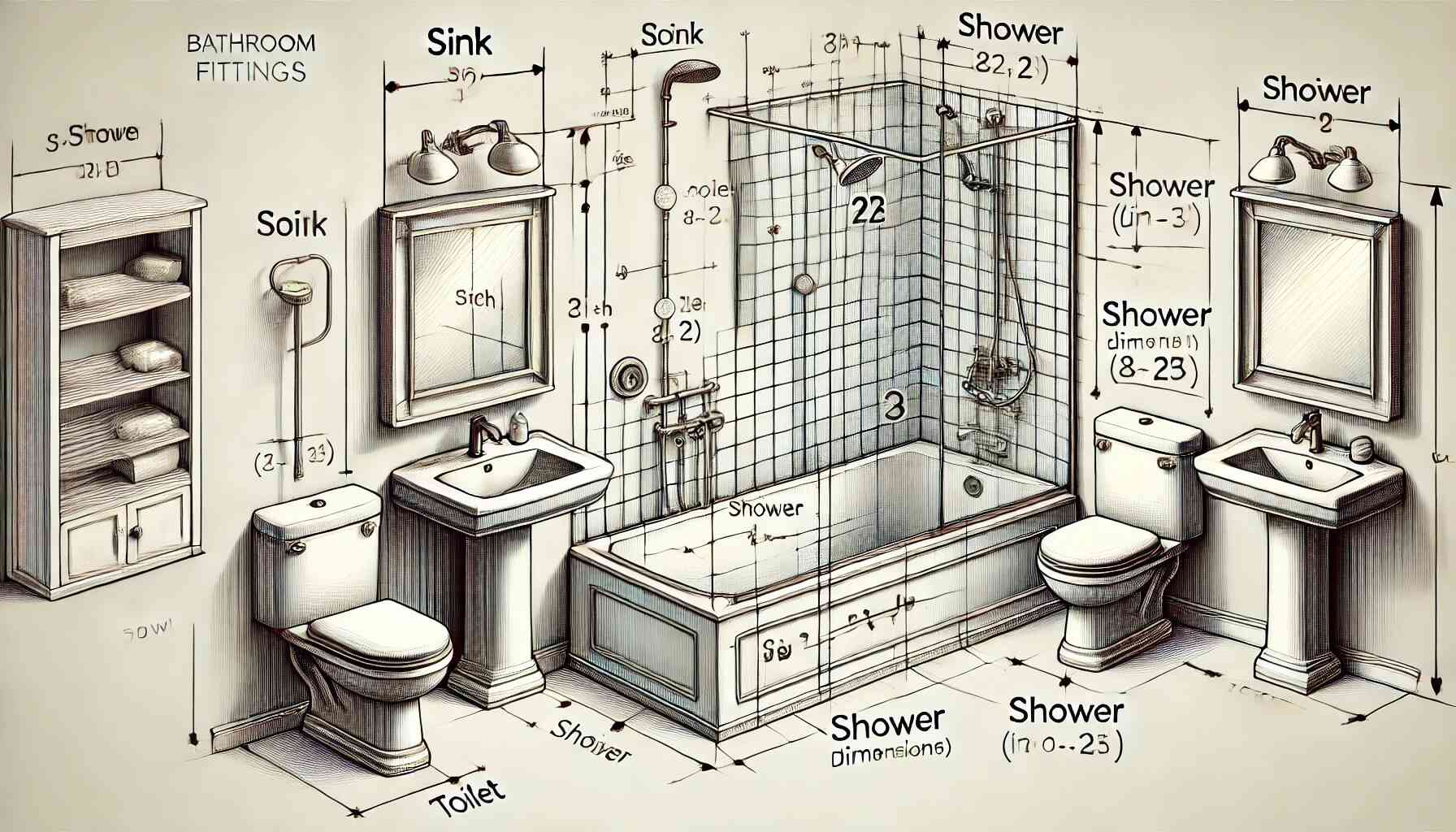Designing a bathroom (Fittings Dimensions Tips) is both an exciting and challenging task. One of the most crucial aspects of this process is choosing the right dimensions for your bathroom fittings. Properly sized fixtures ensure that your bathroom is not only aesthetically pleasing but also functional and comfortable. Here are some essential tips to help you get the dimensions right. (Bathroom Fittings Dimensions Tips)
Understand Your Space
Before selecting any fittings, it’s important to have a clear understanding of your bathroom’s layout and size. Measure the length, width, and height of the room, and note the locations of existing plumbing, electrical outlets, and windows. This will help you determine the appropriate sizes for your fixtures and ensure that they fit well within the space.
Consider Standard Dimensions
While custom fittings can be made to suit any bathroom, standard dimensions often provide a good starting point:
- Toilet: The standard width is around 20 inches, and the height is typically between 28 to 30 inches. Ensure there is at least 24 inches of clear space in front of the toilet for comfort.
- Sink: A pedestal sink is usually 22 to 24 inches wide, while a vanity sink can range from 24 to 48 inches or more, depending on the storage needs. The height of the sink should be around 32 to 36 inches.
- Bathtub: Standard bathtubs are typically 60 inches long, 30 inches wide, and 14 to 16 inches high. Make sure you have enough room for the bathtub and additional space around it for ease of access.
- Shower: A standard shower stall is usually 36 by 36 inches. However, a slightly larger shower, such as 36 by 48 inches, can provide more comfort. Ensure there is enough headroom, ideally at least 80 inches.
Prioritize Accessibility
When planning bathroom fittings, consider the needs of all potential users. Ensure that fixtures are accessible to everyone, including children and individuals with mobility issues.
- Toilet Height: A comfort-height toilet, which is about 17 to 19 inches from the floor to the top of the seat, is easier for most people to use, especially the elderly.
- Sink Accessibility: For wheelchair users, the sink height should be around 30 to 34 inches, with knee clearance underneath.
- Grab Bars: Install grab bars around the toilet and in the shower area. They should be placed 33 to 36 inches from the floor to provide proper support.
Optimize Space Utilization
In smaller bathrooms, space optimization is key. Here are some tips to make the most of limited space:
- Wall-mounted Fixtures: Consider wall-mounted toilets and sinks to free up floor space and create a more open feel.
- Corner Sinks and Showers: Utilizing corners can help maximize space, making the room feel larger.
- Compact Fixtures: Opt for compact versions of standard fixtures, such as a smaller vanity or a corner shower stall, to save space without sacrificing functionality.
Maintain Proportions
The proportions of your fittings should match the size of your bathroom. Oversized fixtures can make a small bathroom feel cramped, while undersized fixtures can look out of place in a larger space. Strive for a balance that maintains both aesthetics and functionality.
Final Thoughts
Selecting the right dimensions for bathroom fittings is essential for creating a functional and comfortable space. By understanding your bathroom’s layout, considering standard dimensions, prioritizing accessibility, optimizing space utilization, and maintaining proportions, you can ensure that your bathroom is both beautiful and practical. Careful planning and attention to detail will result in a bathroom that meets your needs and enhances your home.

